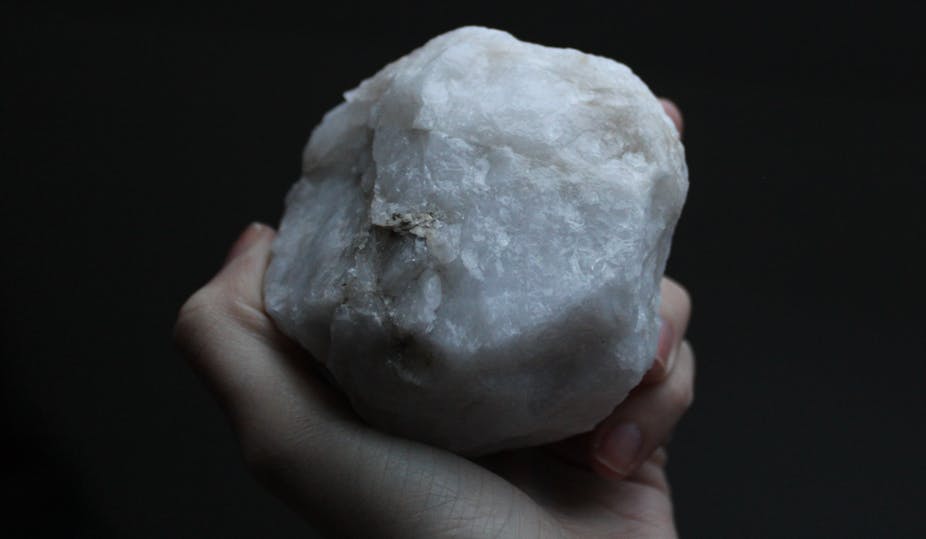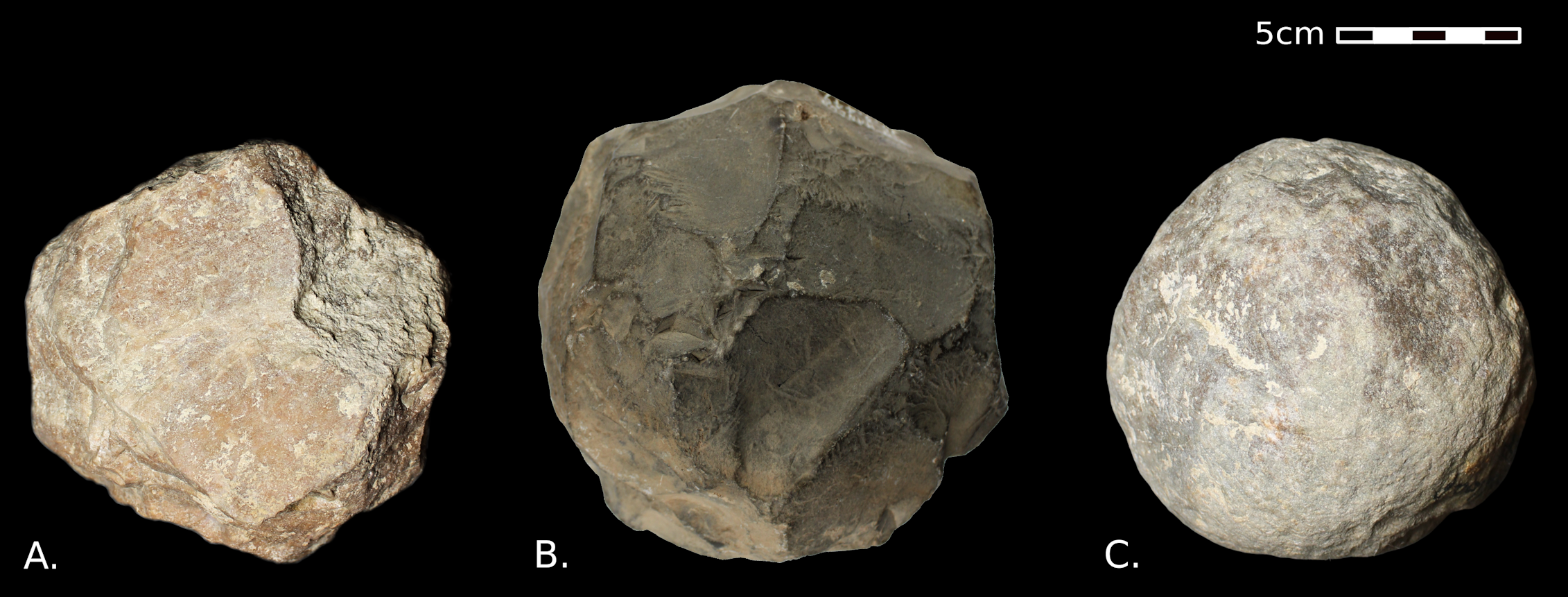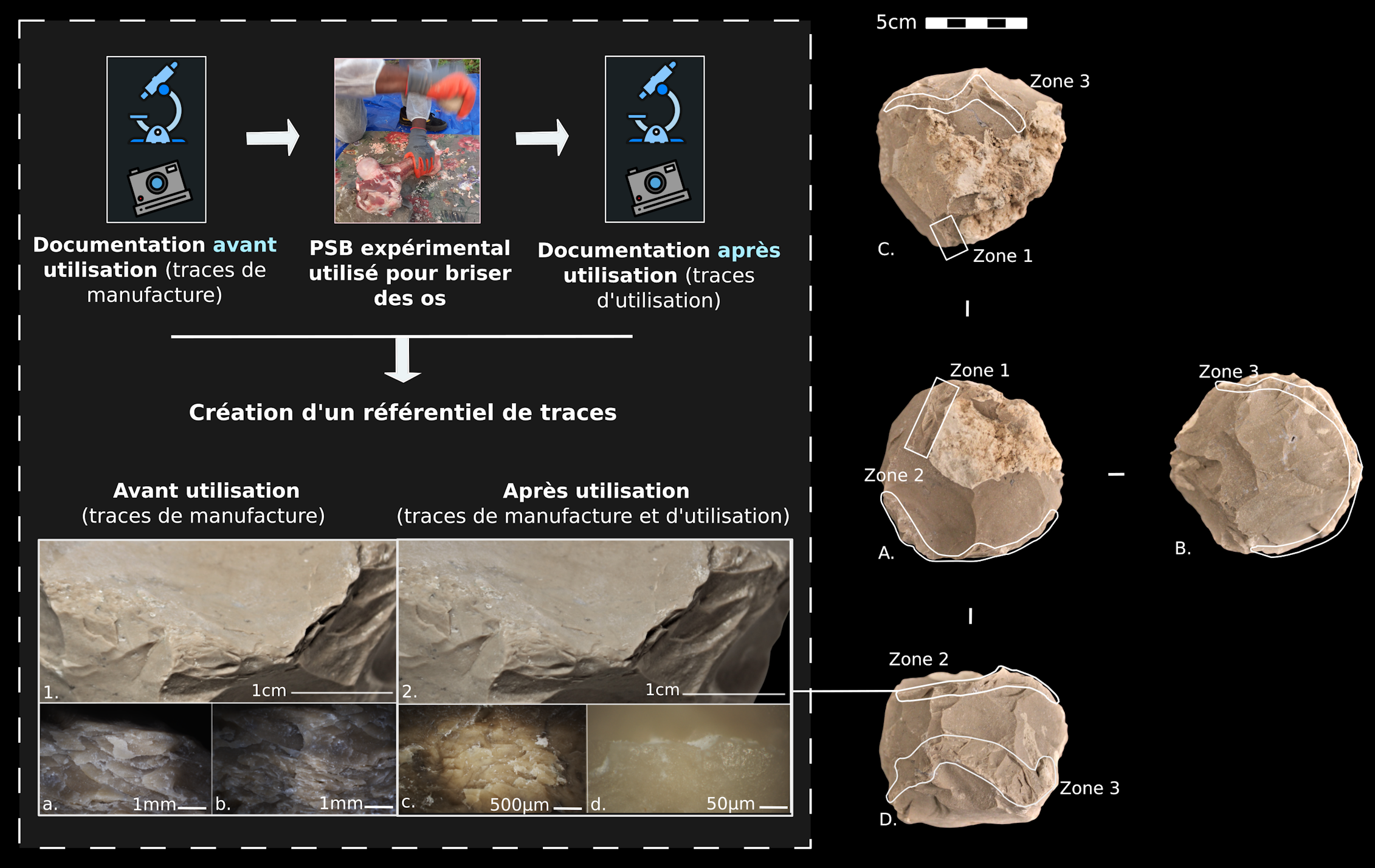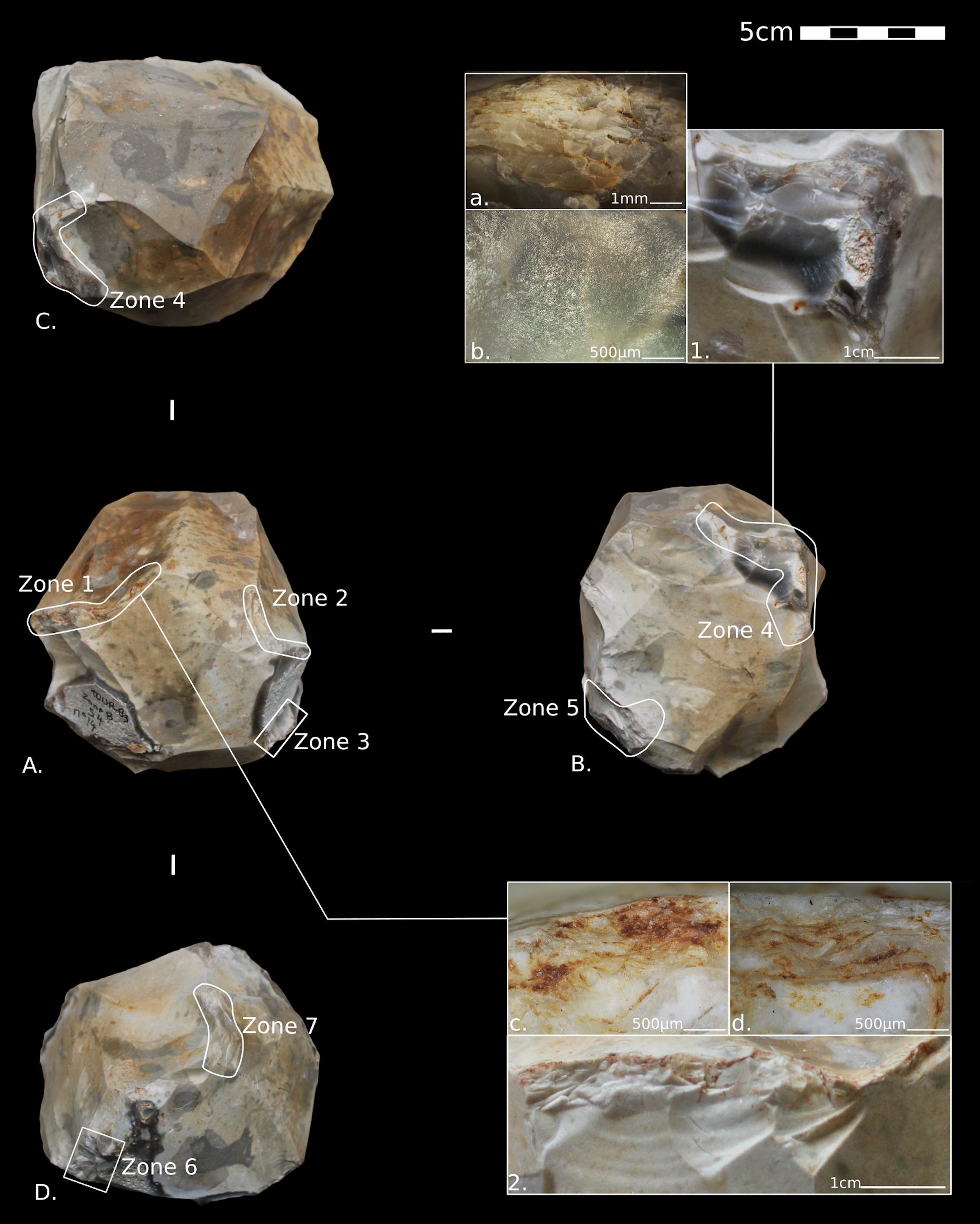What are spheroids, these mysterious prehistoric objects?
Published by Adrien,
Source: The Conversation under Creative Commons license.
Other Languages: FR, DE, ES, PT
Source: The Conversation under Creative Commons license.
Other Languages: FR, DE, ES, PT
Follow us on Google News (click on ☆)
Preserved through time, stone objects offer valuable clues to comprehend the behaviors of our prehistoric ancestors. In particular, the objects grouped under the terms polyhedrons, spheroids and bolas (PSB) are enigmatic stone artifacts, and their function remains an open question among prehistorians.

To understand the use of these objects, archaeologists experimentally reproduced spheroids, here in quartz.
Julia Cabanès/National Museum of Natural History, Provided by the author
Produced over the last two million years throughout the Old World, these objects are very frequent in sites in Africa and Asia, though curiously they are much rarer in Europe.
In the literature, their definition largely depends on their proximity to a sphere: they are objects shaped on at least three faces, with an angular morphology for polyhedrons, faceted spherical for spheroids, and perfectly spherical for bolas. Their sizes and weights also vary widely, ranging from a few grams to several kilograms (a few ounces to several pounds).
Despite their frequency at sites, these objects are little studied and remain poorly understood. What role did they play in the daily lives of fossil hominins? Furthermore, producing such objects is a complex process: why didn't hominins just use simple spherical pebbles, instead of transforming pebbles into spheroids? Our recent study of 513 of these stone tools, from nine Paleolithic sites in France and North Africa, has provided new insights to help answer these questions.

Polyhedron (A), spheroid (B), and bola (C).
Julia Cabanès/MNHN, Provided by the author
A long-standing debate
First, let's review existing studies and theories. In 1847, Boucher de Perthes first described these types of objects, calling them “Celtic axes” when he discovered these stone balls in northern France. In the scientific literature, two main hypotheses propose that these objects were either fashioned tools intended for a specific task or, on the contrary, final-stage cores, that is, knapping waste from which as many flakes were removed as possible, where the flakes were the desired products.
For those who argue that these objects performed a specific function, many view them as projectiles, primarily based on analogies with more recent tools: here, the South American boleadoras bolas. These bolas are spherical objects tied together by rope, used by Indigenous peoples and gauchos as throwing weapons. This comparison was so popular that the South American bolas gave their name to prehistoric bolas.
Other researchers suggest that spheroids were percussors, that is, tools somewhat analogous to hammers, though most of these studies are not based on any actual analysis. However, this hypothesis is supported by one of the only traceological studies conducted on spheroids, which, by examining use marks on pieces from the Qesem site (Israel), concluded that these objects were used to break bones to extract the marrow. Experiments also suggest that spheroids from the Jonzac site (France) served as percussors for flint knapping. Finally, other authors propose—without prior analysis—that spheroids could be club heads or pestles.
An unprecedented study of more than 500 artifacts
Theories regarding the functions of polyhedrons and spheroids are numerous but rarely rely on evidence. In our recent study, we analyzed 513 of these objects from nine sites in France and North Africa, dating from 1.8 million years to 169,000 years ago. We conducted a traceological analysis to document and interpret the sometimes microscopic wear marks on the objects' surfaces. These marks offer clues about the methods of production and use, as well as the natural or accidental processes they underwent.
Interpreting these marks requires creating reference collections—photographic banks of traces with known creation parameters (for example: the task performed, the number of movements). To create these references, we conduct experiments: we knap replicas of spheroids and use them in various tasks (bone breaking, plant crushing) to document how the wear marks evolve on their surfaces.

Example of a reference collection of manufacturing and use traces (bone breaking) on an experimental spheroid. A-D: Four orthogonal views of an experimental spheroid. 1-2: Macro traces. a-d: Micro traces. Zones 1-7: areas showing macro marks from production and/or use (zone 2: bone breaking).
Julia Cabanès/MNHN, Provided by the author
Thanks to these references, it is possible to interpret the marks on archaeological objects through comparison: are they from production or use? If use, what kind of use? Additionally, the dimensions, weight, and ergonomics of an object may influence the knapper's decisions. The analysis of all these parameters allowed us to support our hypotheses.
Clues left during production
According to our results, polyhedrons and spheroids are mainly made from robust rocks that can withstand strong impacts, such as basalt or quartzite. In contrast, softer materials like flint were systematically avoided for making these objects over two million years. Yet, based on our experiments, flint is suitable for producing such artifacts. Thus, flint seems to have been avoided more for functional reasons: spheroids likely served in activities requiring resistance to strong impacts. This might also explain why spheroids are rarer in northwestern Europe, where sites are mostly located in sedimentary basins rich in flint, and where the industry is heavily focused on exploiting this rock.

A spheroid from the Tourville-la-Rivière site. A-D: Four orthogonal views of the spheroid. 1-2: Macro traces of production. a-d: Micro traces. Zones 1-7: areas showing macro marks from manufacture.
Julia Cabanès/MNHN, Provided by the author
Our experiments showed that intense marks are created on the object's surface during its production. Conversely, use leaves few or no traces. Thus, contrary to what has been previously suggested in the literature, most of the surface marks on spheroids are not from intense use, but from their production. However, these objects may have been used without visible use-wear marks on the surface, as was the case in most of our experiments.
Why make these objects?
The few use-wear traces we identified on the archaeological pieces could indicate percussion activities, such as bone breaking. The robustness of these objects—due to their raw materials and sturdy edges—as well as their morphology trending toward the spherical seem to be functional and/or ergonomic aspects sought by the hominins that produced them. Thus, most objects from our study corpus seem to have been shaped for activities requiring resistance to strong impacts.
We observed no advantage to using a spheroid over a simple pebble. There is thus a paradox between the complexity of the manufacturing process and the effectiveness of these objects, which is equivalent to a simple pebble. In some cases, this paradox could suggest that spheroids were not directly produced from pebbles, but rather they may have resulted from the recycling of objects originally produced on pebbles (cores, pebble tools).
According to our study, these objects represent a great diversity of pieces that may have had varied production and use methods depending on the sites, regions, and periods. A simple morphological categorization (polyhedron, spheroid, bola) is therefore not sufficient to account for this diversity. Pervasive and widespread, they were likely disseminated, adapted, and reinvented throughout the Old World during the Paleolithic. To corroborate our hypotheses, this functional analysis must be coupled with a study of the production methods of these objects: this is the second part of our research, which will be published soon.